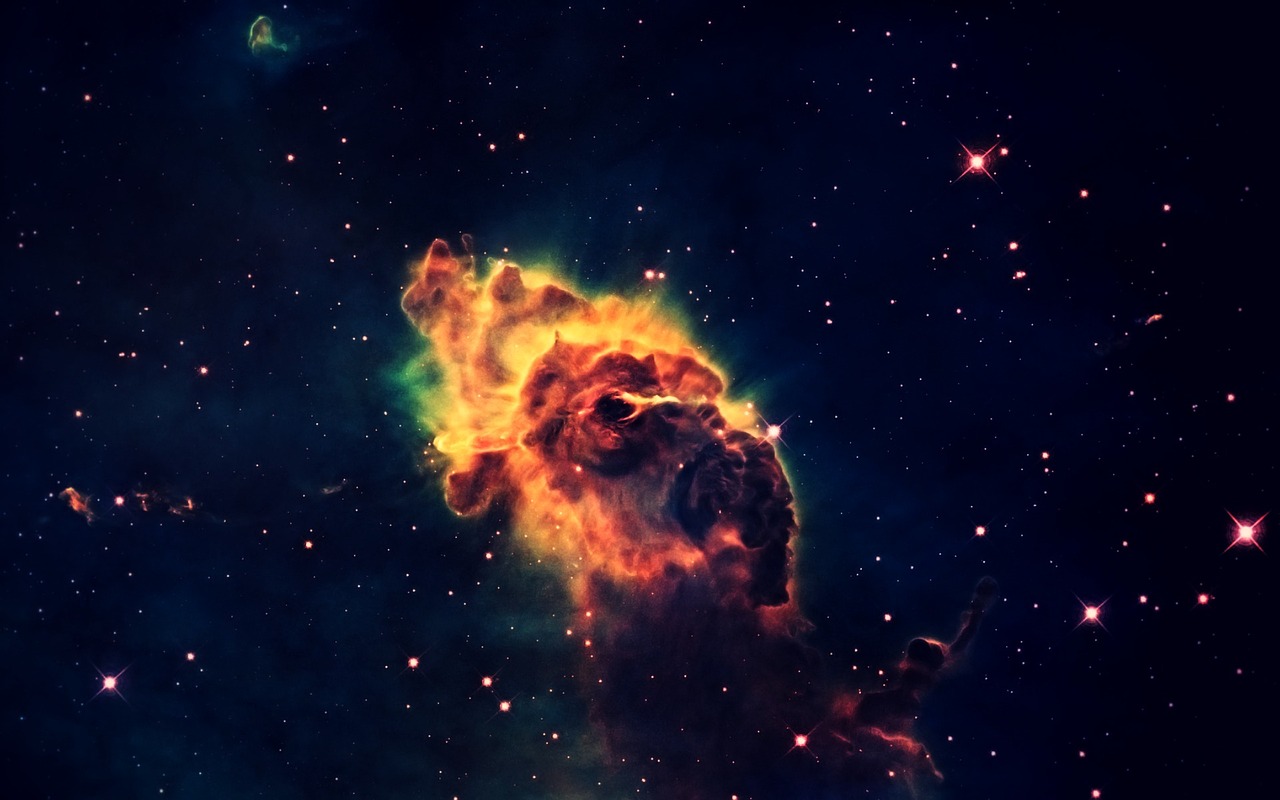An automated telescope in the U.S. sounded the alarm in 2020. Astronomers think the reason is a supernova or a star crashing into a black hole. But apparently, something else fell into a black hole – with unprecedented consequences.
About eight billion years ago, a large cloud of hydrogen crashed into a supermassive black hole – triggering the most energetic explosion ever observed by astronomers. The burst of radiation was ten times more powerful than any known supernova and lasted for more than three years, scientists led by Philip Wiseman of the U.K.’s University of Southampton write in the Monthly Notices of the Royal Astronomical Society.
Supernova was sighted shortly after the explosion.
At first, sky researchers could not make sense of the unusual cosmic event. Only the observation with many different instruments, from the long-wave infrared range to the high-energy X-rays, helped them find an explanation. The explosion could not be seen with the naked eye.
Yet explosions in the cosmos are not uncommon: from thermonuclear explosions on dying stars to supernovae that shred entire stars to the bursts of radiation that occur when supermassive black holes engulf absolute stars. The range of such events is rich. But none of it fit the exceptionally energetic celestial event cataloged as AT2021lwx.
Unusually Energetic, Unusually Long
The explosion was first detected in 2020 by the Zwicky Transient Facility, a special telescope at Mount Palomar Observatory in the United States. Astronomers use it to automatically look for transient events in the sky, such as stellar explosions. “So we stumbled upon it by accident,” Wiseman said, according to a news release from his university. The event caught the automated telescope’s eye and sounded the alarm.
At first, researchers thought it was a supernova or a star crashing into a black hole. Further observations showed that the explosion had occurred in a distant galaxy. The light had taken eight billion years to reach Earth from there – so the explosion had occurred eight billion years ago, about six billion years after the Big Bang.
The great distance also means the explosion was unusually energetic and lasted exceptionally long. “Normally, explosions like this last a few months, then the radiation weakens again,” Wiseman said. “For something to shine that brightly for more than two years is very unusual.”
Researchers discover a new type of stellar explosion.
The only objects in the cosmos with a brightness comparable to AT2021lwx are quasars – supermassive black holes at the centers of distant galaxies. They emit radiation because matter constantly falls into them from outside, heating up. “But such quasars flicker, their brightness fluctuating a lot,” explained Mark Sullivan, a colleague of Wiseman’s at the University of Southampton.
Observed for three years
In contrast, the brightness of AT2021lwx initially increased a hundredfold in about 100 days and has been decreasing very slowly ever since. The researchers searched old data for further eruptions of the object – without success. To track down the cause of the explosion, Wiseman, Sullivan, and their colleagues observed the celestial object for three years with various instruments.
With the data thus obtained, one scenario finally crystallized as the most likely explanation for the explosion. Presumably, a large cloud of molecular hydrogen fell into a black hole with about a billion times the mass of our Sun. The cloud was not engulfed in one fell swoop but in pieces – each of which triggered shock waves in the rest of the cloud, leading to powerful radiation.
Astronomers hope to detect similar events with the next generation of automated telescopes. “Because, obviously, such explosions are very rare,” Wiseman said. “But they are so energetic that they could play an important role in the evolution of the centers of galaxies.”
- Source: ntv.de, chl/dpa/picture: Bild von WikiImages auf Pixabay
This post has already been read 1550 times!



